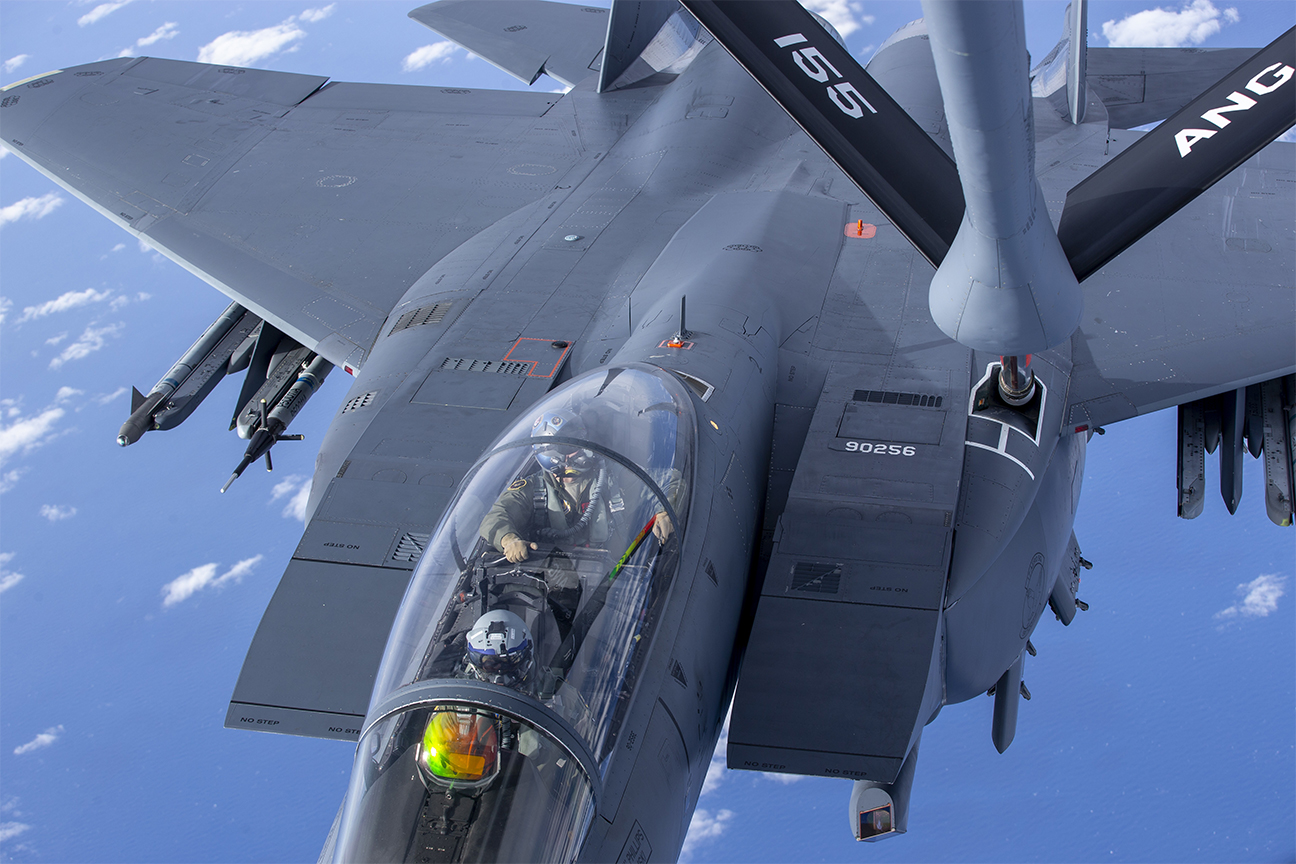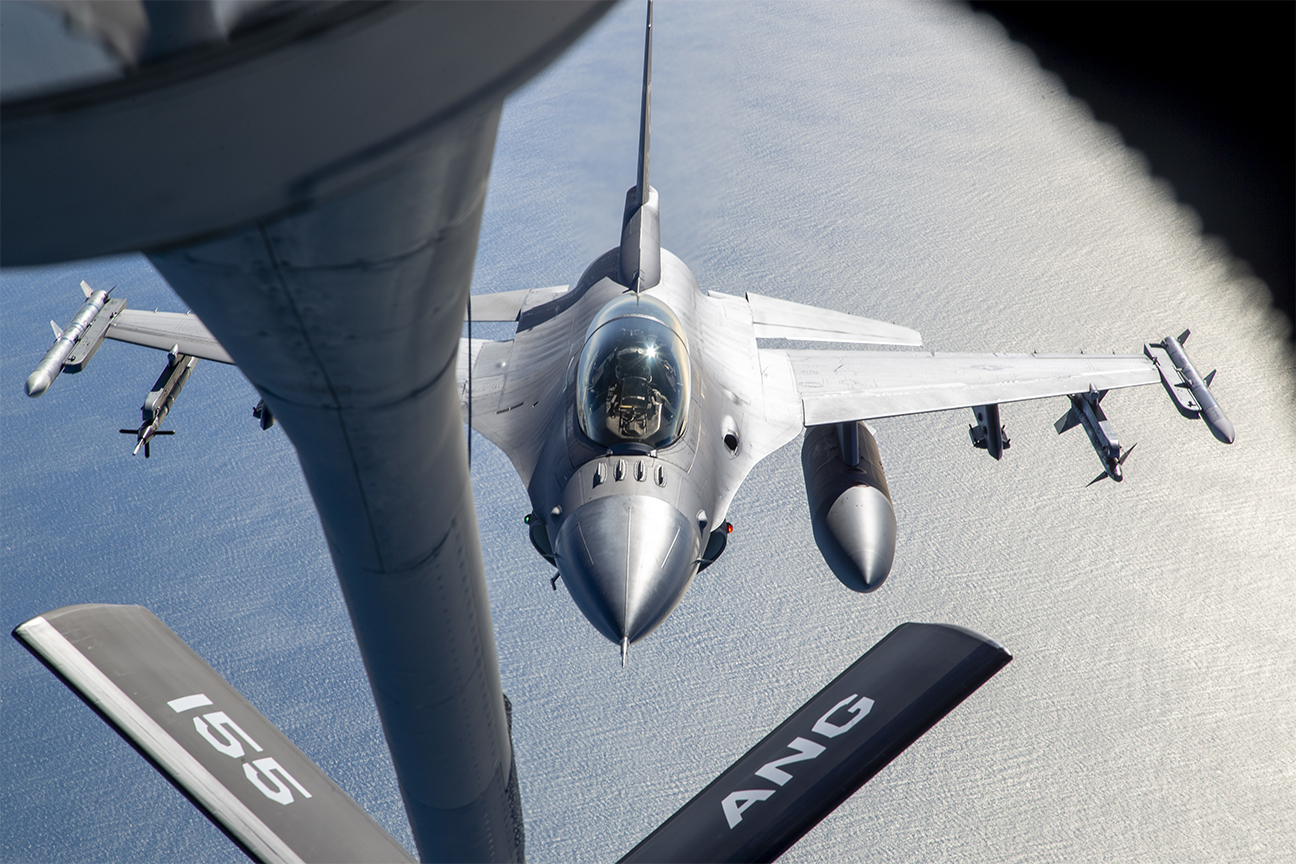Eglin units, efforts key to Emerald Flag success
EGLIN AIR FORCE BASE, Fla. — Emerald Flag, Eglin’s first native multi-domain test exercise, concluded after five days of testing conducted on the Eglin test and training range here Dec. 5.
The inaugural event aimed to experiment with combined joint all-domain command and control technologies. The effort offered a realistic, combat training environment networking aircraft, sensors and computer systems on air, space, and cyberspace platforms. The goal was to collect and distribute tactical data using multiple pathways, to collaborate at rapid speeds.
“Technology is advancing faster than ever before and Emerald Flag is at the cutting edge of connecting air assets and ground strikes,” said Lt. Col. Michael Fritts, Emerald Flag director.
The exercise focused on data driven analysis. The information was collected, analyzed and distributed amongst various Eglin units to assist in war time decision making in various locations.
“We brought together fighter, command and control and electronic warfare aircraft with advanced weapons and integrated them into a strike package with cyber and land assets that used innovative experimental technology in a challenging environment,” said Col. Doug Creviston, 96th Operations Group commander.
Emerald Flag was the first-time classified information was collected and delivered to a cloud environment where it was accessed by a large range of stakeholders, according to Creviston.
“This will optimize post processing of data, knowledge management, and better inform future test flag events,” said Fritts.
Upon detection of potential threats such as the simulated foreign targets including the T-72 battle tanks and surface to air missiles, new software systems, sensors, and communications equipment were used in collecting and consolidating data. The information was then relayed in real time through the open-air environment through data links. Ultimately, the information chain from detection to engagement of targets was tested in multiple resilient pathways, according to Creviston.
Eglin’s five W’s, weapons, water, webs, widgets, and warfighters, were used to harmonize local assets:
Weapons – The 96th Test Wing used their weapons test knowledge to support the tactical mission.
Water – The Eglin Test and Training range provided the venue for technological experimentation.
Webs – Agencies participating utilized this event from the 96th Cyber Test Group to mature their adaptive software used to integrate information.
Widgets – The widgets were utilized with the warfighter early in the development cycle, this capability was tapped into for the first time and came from the Air Force Research Lab.
Warfighter – The 53rd Wing’s operational test capabilities were used to quickly evaluate newly developed technology in the air and through ground-based command and control units. In addition, 33rd Fighter Wing warfighters flew F-35s to allow experimentation with fielded fifth-generation capabilities.
“By lending an operational perspective on large force warfighter integration for Emerald Flag, we were able to ensure the needs of the warfighter were represented throughout this multi-domain test event,” said Lt. Col. Mike Benitez, 53rd WG director of staff.
A success of the exercise is the relationships built on how the units integrate the emerging capabilities in a developmental and operational test community. The test is a key component in accelerating the rate in which the data link JADC2 capabilities can access multi domain capabilities in the future, according to Fritts.
“It’s always exciting working bringing all of Team Eglin’s capabilities together along with other units from across the nation,” said Brig. Gen. Scott Cain, 96th TW commander. “I’m most impressed with the effort to accomplish such a complicated task in such a challenging time this year. It is an impressive feat that we’re able to continue the level of innovation accomplished at Team Eglin.”

A 96th Test Wing F-15E Strike Eagle prepares for in-flight refueling from a 155th Air Refueling Wing KC-135 Stratotanker during exercise Emerald Flag over the Gulf of Mexico, Dec. 3, 2020. More than 25 agencies participated in the exercise, hosted at Eglin Air Force Base, Fla. Emerald Flag combined ground, space, cyber, and air platforms for joint test and experimentation. (U.S. Air Force photo by Staff Sgt. Joshua Hoskins)

Lt. Col. Caesar Johnson, 53rd Wing, watches the Emerald Flag play out in the exercise’s control center Dec. 3 at Eglin Air Force Base, Fla. Emerald Flag is a collaborative multi-service effort focused on increasing the effectiveness of the joint domain warfighter. (U.S. Air Force photo/1st Lt. Karissa Rodriguez)

A 96th Test Wing F-16D Fighting Falcon prepares for in-flight refueling from a 155th Air Refueling Wing KC-135 Stratotanker during exercise Emerald Flag over the Gulf of Mexico, Dec. 3, 2020. More than 25 agencies participated in the exercise, hosted at Eglin Air Force Base, Fla. Emerald Flag combined ground, space, cyber, and air platforms for joint test and experimentation. (U.S. Air Force photo by Staff Sgt. Joshua Hoskins)
